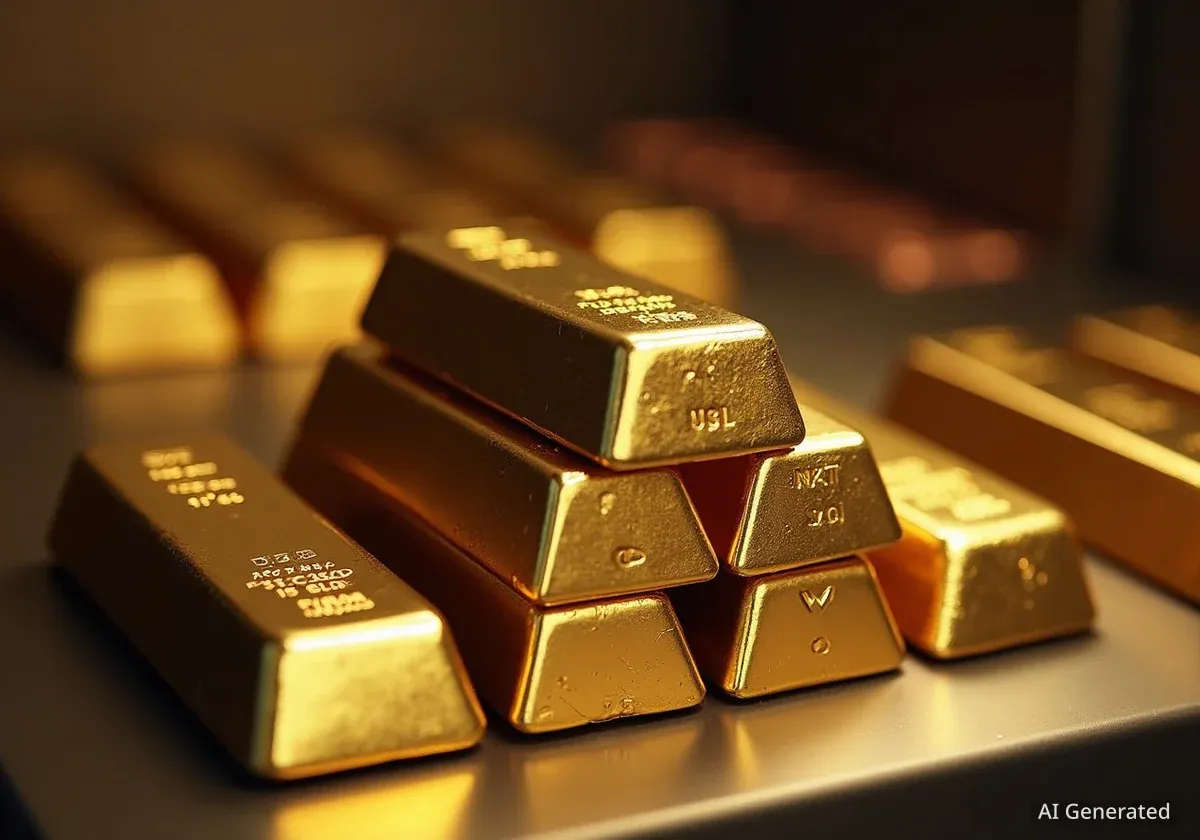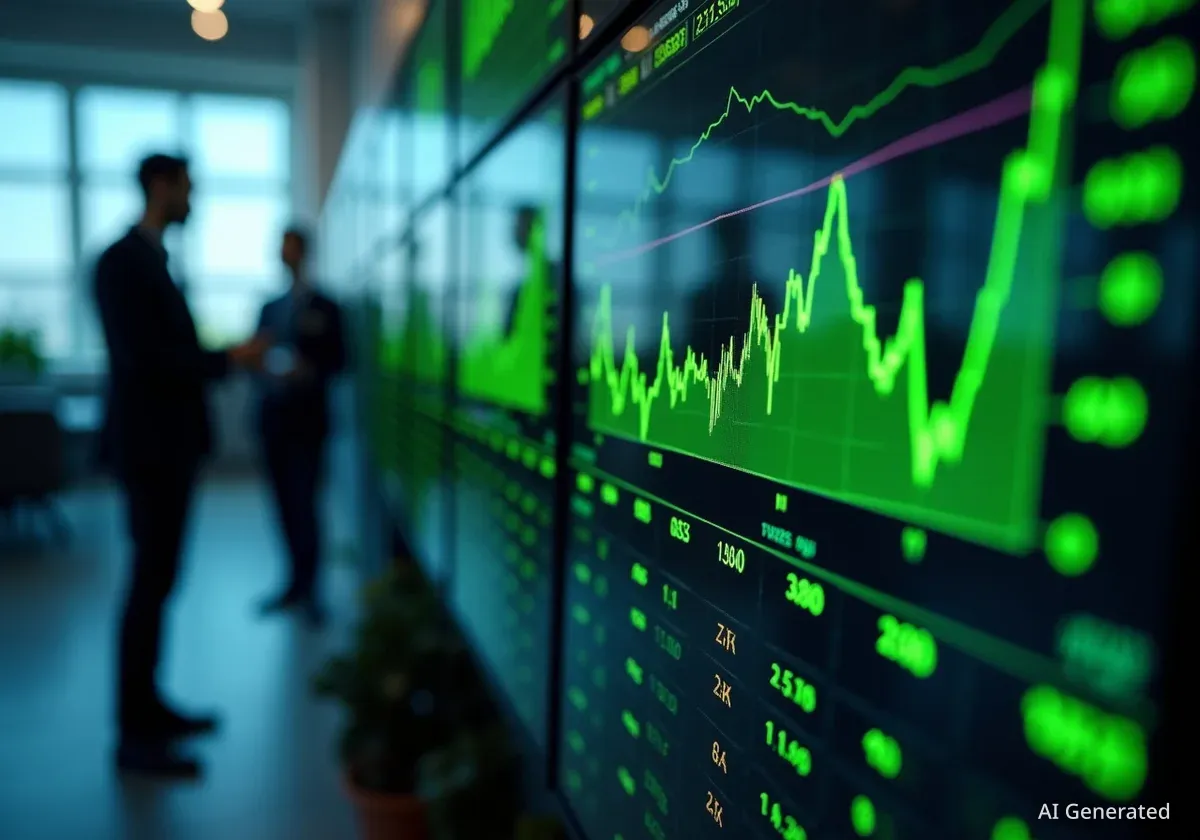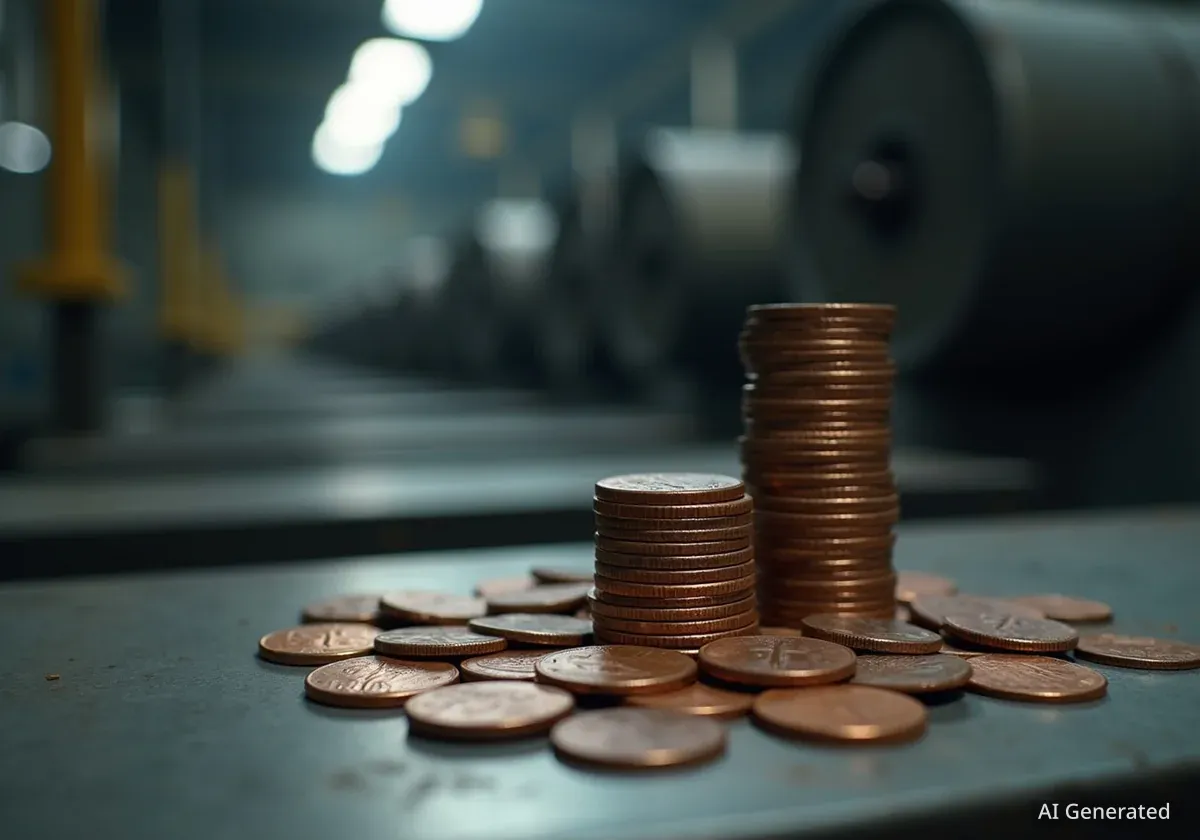Citigroup strategists have issued a bullish forecast for precious metals, predicting that the current rally in gold and silver will not only continue but will also expand to include industrial metals like copper and aluminum by 2026. The bank's analysis points to a combination of economic concerns and anticipated changes in U.S. monetary policy as key drivers for this extended commodities boom.
In a recent note to clients, a team led by Maximilian Layton, Citigroup's global head of commodities, outlined the factors supporting their optimistic outlook. These include worries over U.S. national debt, a weakening dollar, and the prospect of a more dovish Federal Reserve leadership by mid-2026.
Key Takeaways
- Citigroup is bullish on gold, silver, copper, and aluminum, expecting the rally to broaden over the next two years.
- The bank set a short-term price target of $3,800 per ounce for gold, with a bull case scenario reaching $4,000.
- Analysts predict the commodities bull market will shift to copper and aluminum in 2026, driven by new Federal Reserve leadership and lower interest rates.
- Demand from artificial intelligence, data centers, and the energy transition is cited as a major catalyst for aluminum and copper.
Gold and Silver Pave the Way
The forecast comes as gold prices approach new records and silver trades at levels not seen in over a decade. According to Layton's team, the conditions are highly favorable for the precious metals market. They advise clients to consider buying on any price dips for gold.
The bank's strategists have set an ambitious target of $3,800 per ounce for gold within the next three months, with prices expected to peak in the first quarter of the following year. This positive sentiment is a notable shift, as Citigroup has revised its previous forecasts upward.
Revised Gold Forecasts
Citigroup has adjusted its long-term outlook for gold, walking back some earlier caution. The bank now projects gold will reach $3,700 per ounce in the first quarter of 2026, a significant increase from its previous forecast of $2,900. For the fourth quarter of 2026, the price is now seen at $2,800, up from $2,600.
The analysis presents several scenarios for gold's trajectory. A bull case, fueled by stagflation and concerns over the Federal Reserve's independence, could see gold prices climb to $4,000 per ounce in the coming months. Conversely, a bear case, which assumes a muddling economy and de-escalation of geopolitical tensions, projects a dip to $3,400.
Economic Factors Driving the Rally
The strategists at Citigroup identified both cyclical and structural forces behind the sustained momentum in commodities. They believe these factors will create a favorable environment for metals through 2026.
Short-Term and Long-Term Catalysts
In the short term, the market is being influenced by cyclical trends such as a weakening labor market and concerns that trade tariffs could slow U.S. and global economic growth. These elements tend to increase the appeal of safe-haven assets like gold.
Looking further ahead, structural issues are expected to play a larger role. The report highlighted growing worries about the size of the U.S. national debt and the persistent downward pressure on the U.S. dollar as key long-term drivers. These structural weaknesses enhance the attractiveness of hard assets.
"We see the gold and silver bull market broadening and eventually shifting into copper and aluminum during 2026, driven by the prospect of new dovish Fed leadership... and related lower U.S. real interest rates and downward pressure on the dollar."
The note also anticipates that stimulus from the proposed "One Big Beautiful Bill Act" could begin to boost household finances and capital expenditure investment during the first half of 2026, further stimulating economic activity and demand for industrial metals.
Industrial Metals Poised to Join the Boom
While precious metals are currently in the spotlight, Citigroup's analysis suggests the rally will expand. The bank is particularly optimistic about the prospects for copper and aluminum, citing structural demand from emerging technologies and the green energy transition.
Copper's High-Voltage Future
For copper, the bank has established a base case price target of $12,000 per ton over the next six to 12 months, which represents a potential 20% upside from current levels. An even more optimistic bull case projects a price of $14,000 per ton.
According to the forecast, copper is heavily exposed to structural trends like the energy transition and the build-out of AI infrastructure. Its value is expected to be leveraged by an anticipated pickup in U.S. and global growth from 2026 onward.
The strategists noted that while their outlook for the fourth quarter of 2025 is neutral, the long-term fundamentals for copper are exceptionally strong. A more accommodative Federal Reserve from mid-2026 is expected to lower real interest rates, making large-scale industrial projects more financially viable and boosting copper demand.
Aluminum Demand Fueled by AI and Robotics
Citigroup expressed a "very bullish" stance on aluminum for the next six to 36 months. Analysts view any price pullbacks as significant long-term buying opportunities for the lightweight metal.
The demand for aluminum is increasingly tied to future-facing sectors. The report states, "Aluminum is heavily exposed to AI/datacenters, humanoid/other robots given competition for power from the same future-facing sectors."
This is because aluminum production is highly energy-intensive. As data centers and AI compete for a limited supply of electricity, the cost of producing aluminum is likely to rise. At the same time, these high-tech industries are also driving direct demand for the metal itself. This dynamic, combined with a capacity cap on production in China, creates a compelling case for higher aluminum prices.





